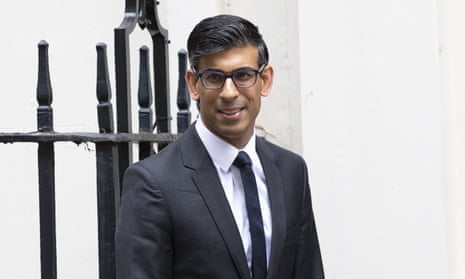The number of workers coming back from furlough fell sharply in July despite the removal of most pandemic restrictions across the UK, with 1.6m jobs still on emergency wage support at the end of the month.
Figures from HM Revenue and Customs showed about 340,000 people moved off the Treasury’s multibillion-pound job protection scheme over the course of July, down from a rate of 590,000 in the month of June.
The 1.6m jobs still furloughed in July compares with a peak of 5.1m in January during the winter lockdown.
In a sign of persistent pressure on jobs despite the government’s “freedom day” removal of pandemic restrictions in England on 19 July, and as controls were lifted in Scotland, Wales and Northern Ireland, the figures show a quarter of employers were still using the scheme at the end of the month, with 5% of the overall UK workforce still receiving wage top-ups.
Some occupations were more heavily furloughed than others, reflecting subdued consumer demand amid the rise of the coronavirus Delta variant or the impact of continuing government restrictions on international travel.
More than half of staff in passenger air transport – about 51% of the workforce – were still temporarily away from their jobs at the end of July, amid continuing high rates of coronavirus infections and the government’s traffic light system affecting demand for foreign travel and holidays.
Areas close to airports remained among the places with the highest rates of workers on furlough, with 10% of all employees in Hounslow, Hillingdon and Slough – near to Heathrow – and 9% of staff in Crawley – close to Gatwick – still on the scheme.
Almost half of workers at travel agency and tour operators remained furloughed, while more than a quarter of employees in the creative, arts and entertainment sector remained on the scheme.
The figures come as the final snapshot from HMRC before the government removes the furlough scheme at the end of the month. Companies had been asked from 1 July to contribute towards the cost of furloughed employees’ wages, in a gradual winding down of the programme that has protected more than 11m jobs since it was launched during the first wave of Covid-19 last year.
Diana Holland, the Unite assistant general secretary, said the figures demonstrated the need to continue furlough for the hardest-hit sectors, particularly aviation, to prevent job losses and damaging the UK’s economic recovery from the pandemic.
“For industries which continue to be directly affected by the pandemic, the ending of the furlough scheme will result in jobs being needlessly lost. Foremost among these is the aviation sector, whose recovery is still delayed and unlike any other sector is hugely reliant on the lifting of international restrictions,” she said.
It also comes as businesses grapple with severe shortages of workers, including lorry drivers, warehouse staff, care workers and hospitality employees. However, economists have warned the end of the scheme is unlikely to address these gaps because the highest numbers of staff on furlough are in different sectors.
Rishi Sunak, the chancellor, said the government was “doubling down” on plans to support job creation and training as the scheme comes to an end this month.
“It’s fantastic to see furlough levels at their lowest since the start of the pandemic with young people in particular getting back to work and kickstarting their careers as the UK gets back to business,” he said.
Top five furloughed occupations
Passenger air transport: 51%
Travel agency and tour operator activities: 46%
Photographic activities: 35%
Creative; arts and entertainment activities: 28%
Clothing manufacturers: 26%










